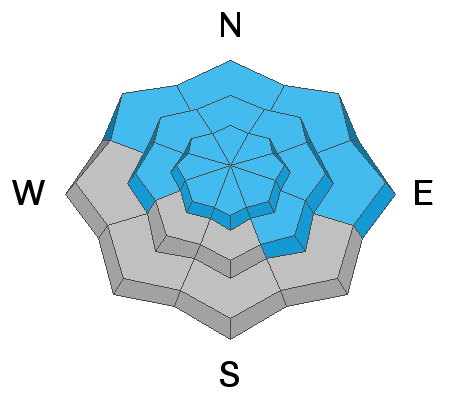Under patchy and partly cloudy skies, the last of the snow showers are rolling off the Great Salt Lake. In large, we are drying out today, and the weather will begin to clear out before the next storm moves in this evening. We should remain partly cloudy, with some low elevation clouds clinging to the mountains.
Current mountain temperatures at 700 MB (10,000') are -15 °C (5°F) and will be warming to -7.5 °C (18.5 °F) this afternoon. Winds will continue to be from the west-northwest and generally light throughout the day, with speeds in the 5-10 mph range gusting into the 20's at the upper elevations.
The past week has been a wet and wild ride here in Northern Utah; this prolonged storm cycle laid down some impressive snow totals around the state. Below are the rough storm totals from last Thursday to this morning.
Little Cottonwood: 60-82 inches of new snow with 4.0-6.73" water weight.
Big Cottonwood: 20-43 inches of new snow with 1.50-3.08" water weight.
PC Ridgeline: 20-30 inches of new snow with 1.5-2.0" water weight.
Ogden area: 20-30 inches of new snow with 1.5-2.5" water weight.
Provo area: 10-17 inches of new snow with 0.70-1.0" water weight.
Starting yesterday morning around 5:00, am, the Wasatch Mountains started to come to life with a widespread historic natural avalanche cycle. Little Cottonwood Canyon was the center of attention for most of the day, with many large destructive avalanches. These avalanches were thousands of feet wide, connecting entire starting zones, breaking 6-10 deep, and running full track to the valley below. We are still trying to figure out the extent of the cycle, and hopefully, more information and pictures will come soon.
A couple more note-worthy avalanches came in from the Park City Ridge. Square Top and Wall of Voodoo avalanched roughly 1,000 feet wide 6-10 feet deep and ran full track. Another one from Sound of Music had roughly the same dimensions.
The last one to note was a low elevation avalanche from
Happy Day's in Big Cottonwood. While this avalanche wasn't a valley crasher, it concerns me as this is the type of terrain many of us might visit today.










